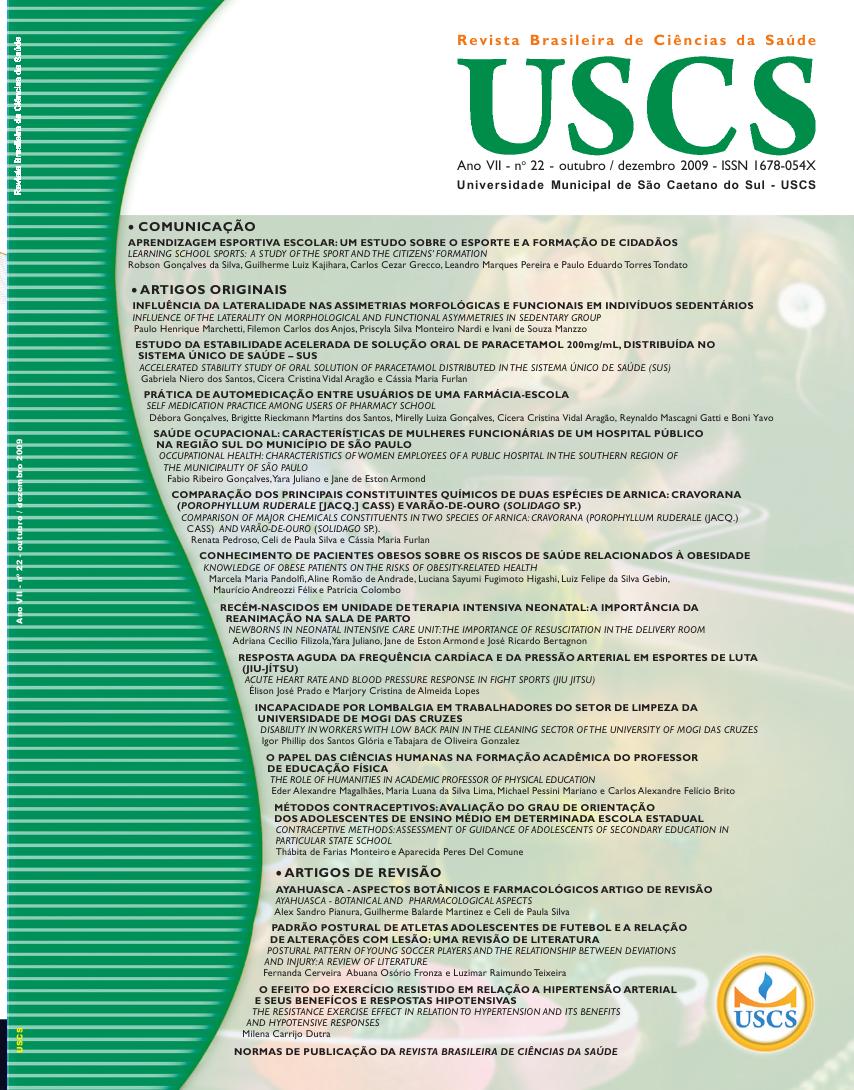AYAHUASCA – ASPECTOS BOTÂNICOS E FARMACOLÓGICOS AYAHUASCA – BOTANICAL AND PHARMACOLOGICAL ASPECTS
DOI:
https://doi.org/10.13037/rbcs.vol7n22.527Keywords:
ayahuasca, banisteriopsis caapi, psychotria viridis, harmina, harmalina.Abstract
Há séculos, o chá da ayahuasca vem sendo utilizado por tribos indígenas da Bacia Amazônica e do sul dos Andes com finalidades terapêuticas, mágicas e religiosas. No século passado, surgiram seitas não indígenas que fazem uso deste chá e, por intermédio dessas religiões, este composto vem se difundindo pelo mundo. A ayahuasca é constituída pelo caule classificado como liana da espécie Banisteriopsis caapi e das folhas do arbusto Psychotria viridis. Esses vegetais apresentam potentes alucinógenos em sua composição, como a harmina, a harmalina, a tetrahidroharmina e a N,N-dimetiltriptamina (DMT). Os principais efeitos são alucinações, hipertensão, taquicardia, vômitos e diarreia intensa, caracterizados por usuários como processo de “purificação da alma”. Porém, a ayahuasca tem bases farmacológicas ainda pouco conhecidas, e seu uso pode trazer efeitos nocivos ao organismo, quando combinado com outras substâncias, havendo necessidade de uma maior atenção por parte dos pesquisadores para que se promovam estudos buscando avaliar o potencial tóxico destas substâncias. O presente trabalho teve por objetivo realizar um levantamento sobre os principais aspectos botânicos e farmacológicos das plantas constituintes da ayahuasca.Downloads
Downloads
Issue
Section
ARTIGOS DE REVISÃO
License
Policy Proposal for Journals offering Free Delayed Access
Authors who publish in this magazine agree to the following terms:
- Authors maintain the copyright and grant the journal the right to the first publication, with the work simultaneously licensed under a Creative Commons Attribution License after publication, allowing the sharing of the work with recognition of the authorship of the work and initial publication in this journal.
- Authors are authorized to assume additional contracts separately, for non-exclusive distribution of the version of the work published in this magazine (eg, publishing in institutional repository or as a book chapter), with the acknowledgment of the authorship and initial publication in this journal.
- Authors are allowed and encouraged to publish and distribute their work online (eg in institutional repositories or on their personal page) at any point before or during the editorial process, as this can generate productive changes, as well as increase impact and citation of the published work (See The Effect of Open Access).









